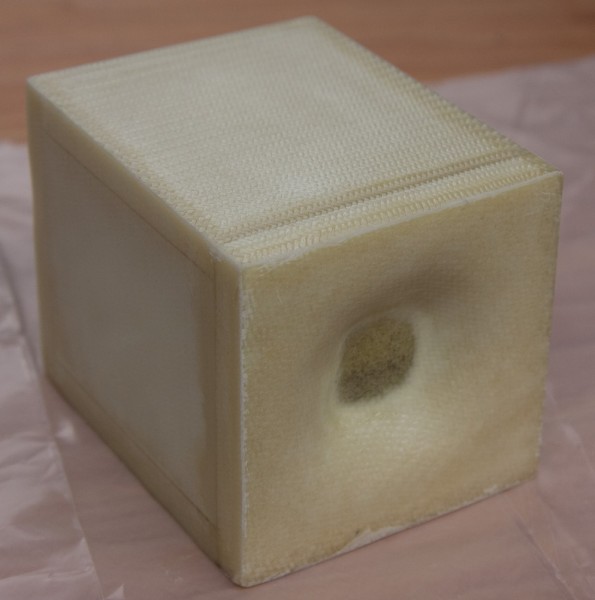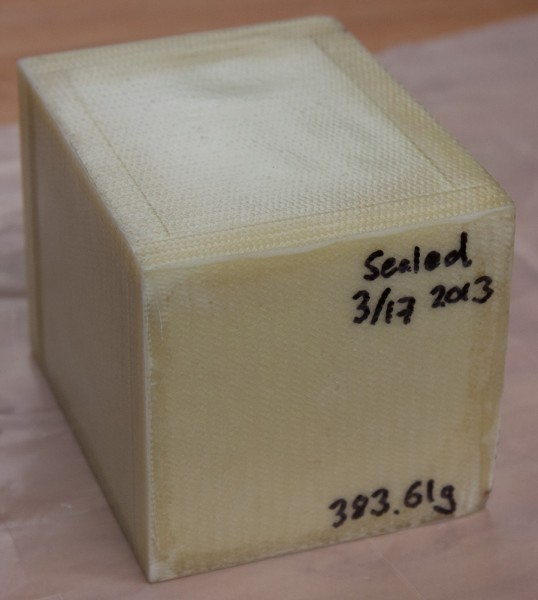In the first part of the “gasoline experiment”, I had just sealed up the cube and was waiting for it to cure and see if it leaked. I realized that it was pretty important to keep the cure temperature as even as possible so as to not produce any pressure change inside before the flox on the sealing surfaces had cured. Then I realized I had a temperature-controlled environment available: the epoxy hot box. Not only does it keep the temperature constant to within a degree Celcius, it’s also a nice and warm curing temp that should speed up cure significantly. I can’t believe I haven’t thought about this before. Instead of heating up the entire shed, I can just pop the pieces, as long as they’re small, into the hot box.
After curing for 2 days, I took it out and put it upside down for a while. No evidence of leakage. Perfect.
On to glassing the outer skins. The urethane foam is too fragile to leave exposed, so I added a single ply of BID on all faces. This gave me ample practice in making flox corners, since there are 12 edges on a cube and they all had to be done using flox corners. After a while, I got pretty good at it. Using the plastic “frosting bag” helps a lot to get it down into the corner without making a mess. I also realized you have to overfill the corners a bit, as the flox settles into the space the surface will sink. My first corners have a significant dip in the glass ply, but the later ones look better.
This was a bit slow, since I had to let each side cure before starting on a new one. However, with the hot box curing, I could do one side per 24h without a problem even with the West 209 hardener. Here’s the final result:

The final version of the gasoline cube, with outer skin on all faces. The gasoline level is visible through the “window”.
After all the work was done, I weighed it and noted the initial weight and the date it was sealed up on the back face.

On the back, the weight and the date on which it was sealed. Any leakage should be evident by weight loss.
Any gasoline leakage, no matter how slow, should show itself as a weight loss. I’ll weigh it every quarter or so and see if there’s any change.
So there you have it — now we wait five years or so and see if it holds up. Talk about long-term experiment. Almost astronomical timescales…
I just reweighed this, 21 months later: 382.50g. It appears to have lost 1g. However, I also weighed it in October 2013, and then it was at about +2g, so it’s not clear if this represents gasoline evaporating or just the epoxy adjusting to different humidity. While epoxy shouldn’t absorb a lot of water, it does absorb some. Though if that was the case, I’d expect after living in Hilo for a year, it would have gained weight…)